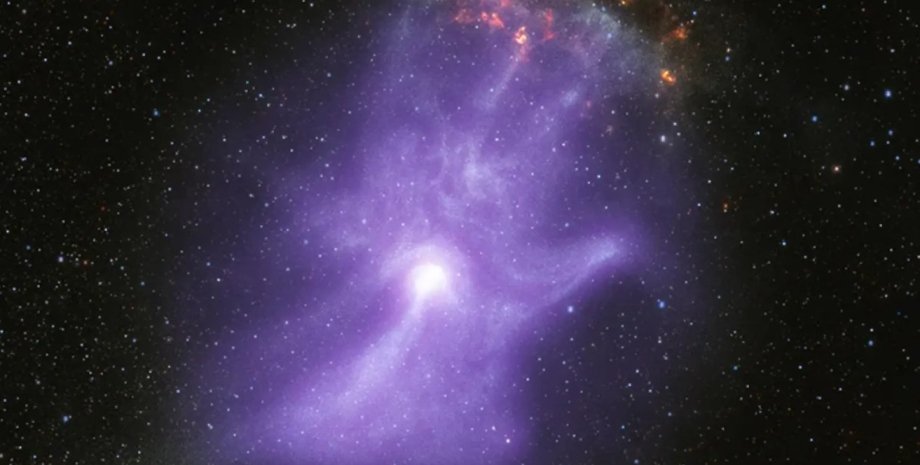
Scientists have uncovered the secrets of MSH 15-52, one of the most amazing pulsar nebulae, also known as the “cosmic hand” or “hand of God”.
With the help of two powerful X-ray telescopes, the scientists were able to visualize the “bones” in the ghostly hand, which are magnetic fields. The NASA Chandra X-ray Observatory and the Imaging X-ray Polarimetry Explorer (IXPE) observatory were used in the study.
“The data obtained from IXPE gave us the first map of the magnetic field of the ‘hand’. Charged particles move along the magnetic fields and determine the shape of the nebula, just like the bones in a human hand,” says Roger Romani, the study’s leader from Stanford University.
Back in 2001, NASA’s Chandra Observatory first revealed the pulsar PSR B1509-58, as well as its pulsar wind nebula MSH 15-52. The shape of the latter resembles a human hand. The pulsar that formed it is located about 16 thousand meters away. light years from Earth.
Now, the researchers have been observing the nebula for 17 days using two X-ray observatories at once. It was IXPE that was able to reveal the incredible details of the nebula.

Based on the data obtained, the scientists found out that due to the flow of charged particles and antimatter, the supernova remnant has existed for 1500 years. It was then that the star that turned into a pulsar came to an end.
“We are all familiar with X-rays as a medical diagnostic tool. But here we used X-rays in a different way, and they also revealed information that would otherwise have been hidden from us,” emphasizes study co-author Josephine Wong of Stanford.
Thanks to the study, the scientists found that in the nebula, energetic particles receive more power in complex turbulent regions near the pulsar itself, which is located at the base of the phantom palm. The particles then flow to more homogeneous areas of the magnetic field – along the wrist, fingers, and thumb.
The new data also shows a bright X-ray jet stretching from the palm of the hand down the wrist. At the beginning, the polarization is quite low, apparently due to turbulence and mixed magnetic fields, but then the jet straightens and becomes brighter. Scientists have noticed higher polarization in the outer region of the nebula, where the arm is “cut off”.
“We were able to reveal the life history of super-energetic matter and antimatter particles around the pulsar. This confirmed our theory that pulsars can work as particle accelerators,” says co-author Niccolo Di Lalla from Stanford.

